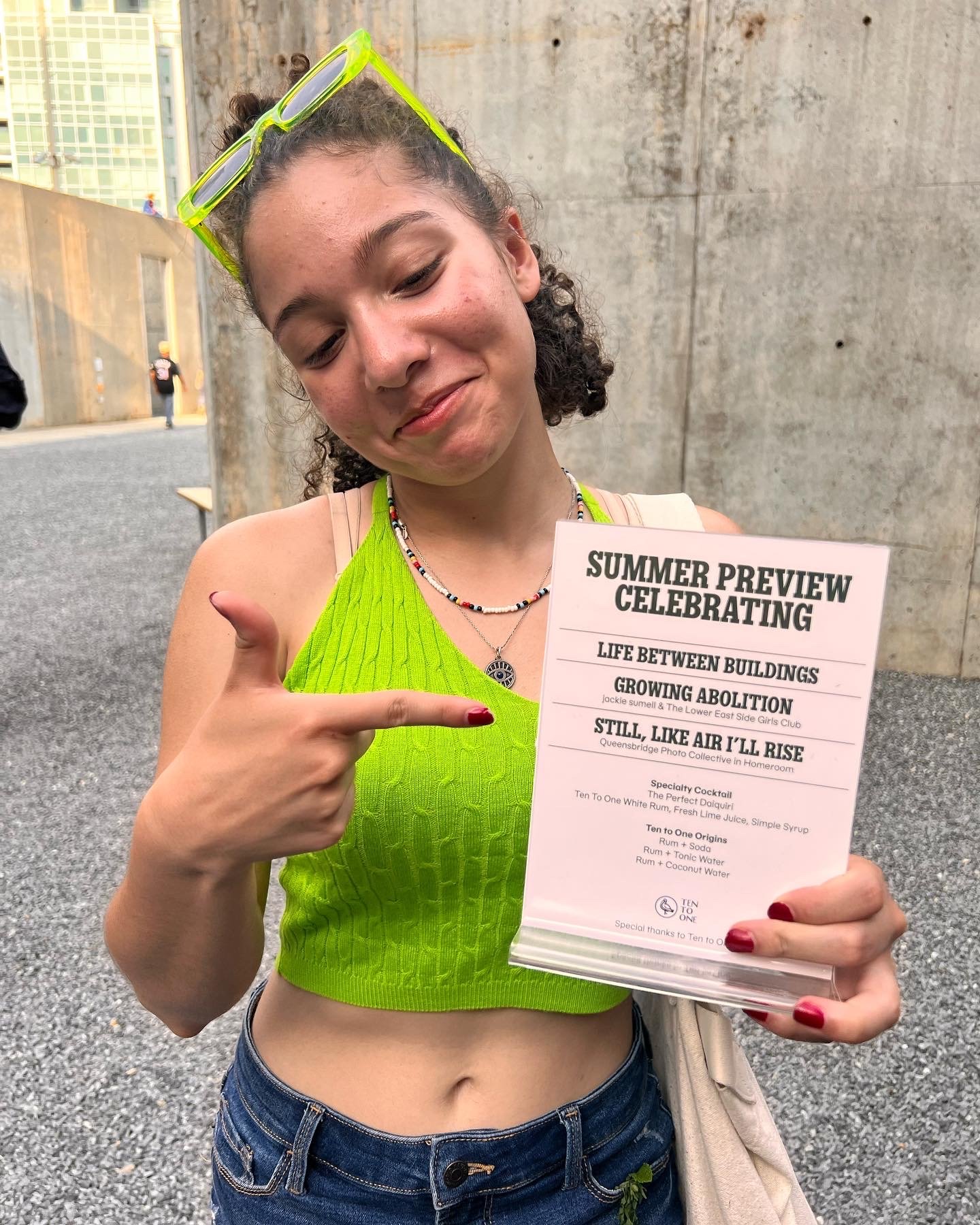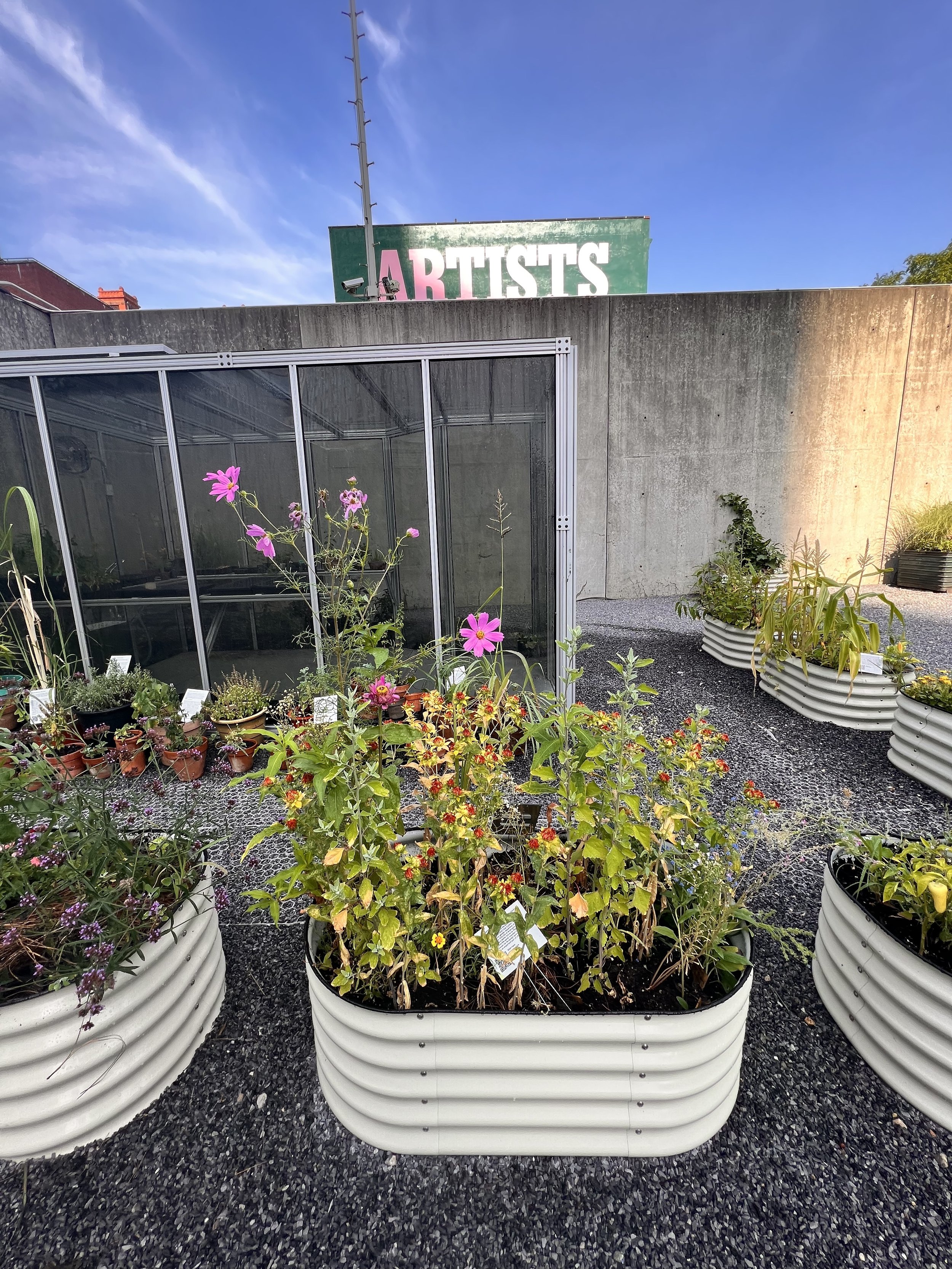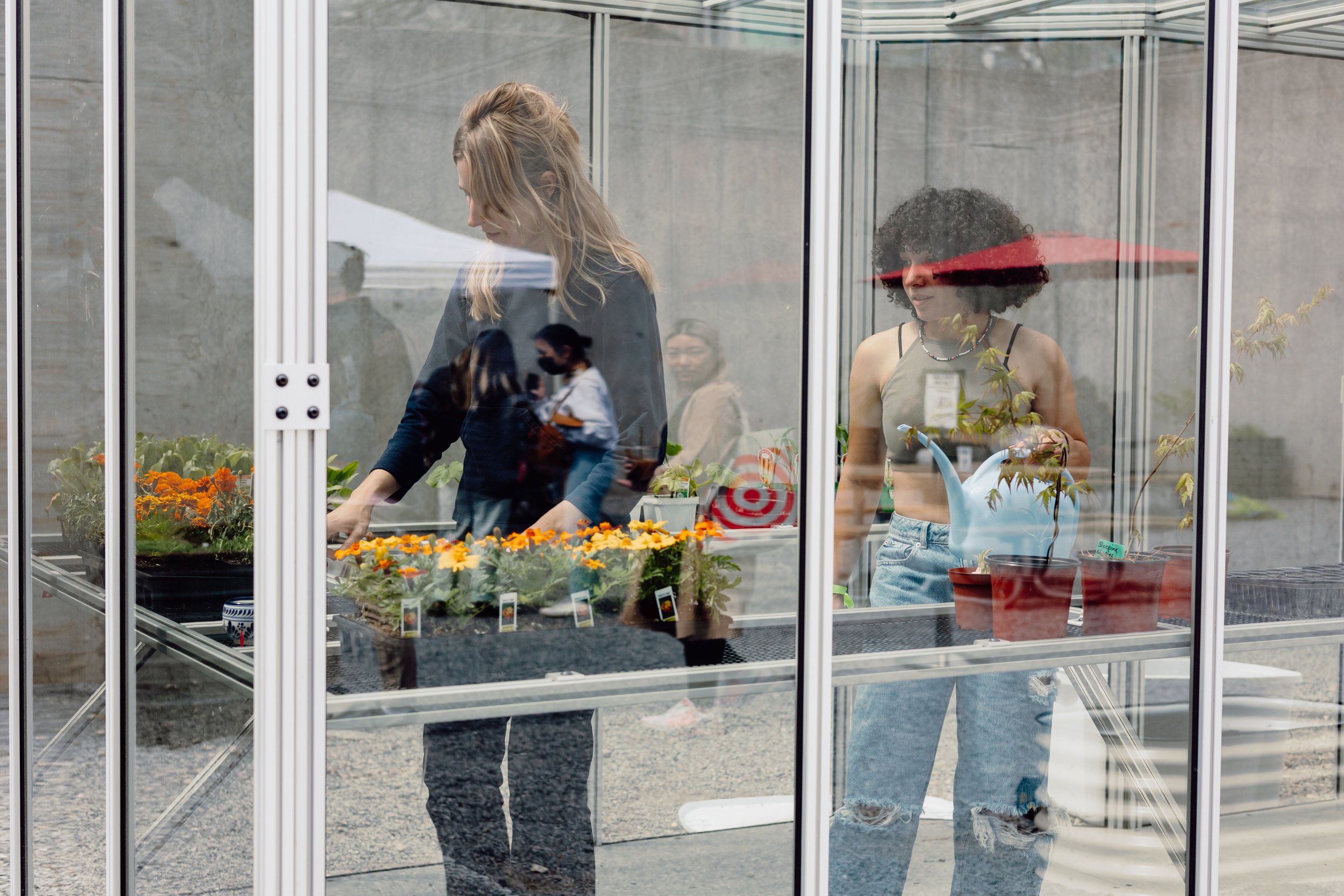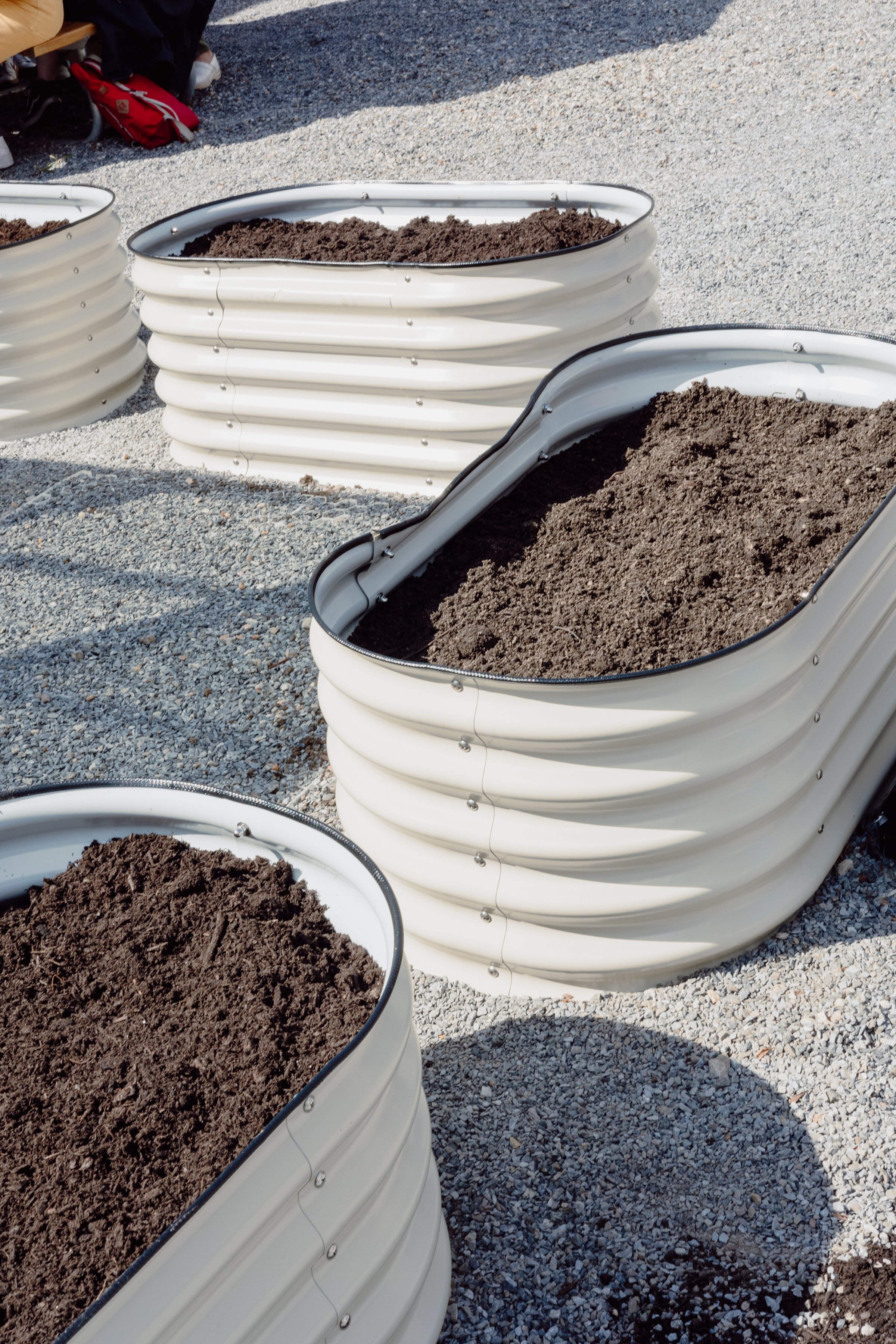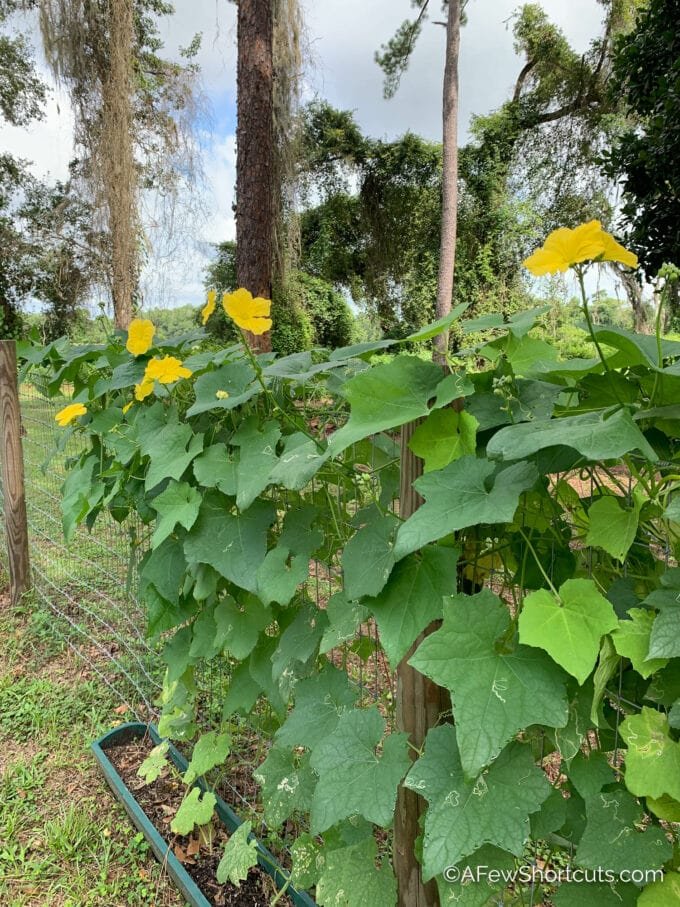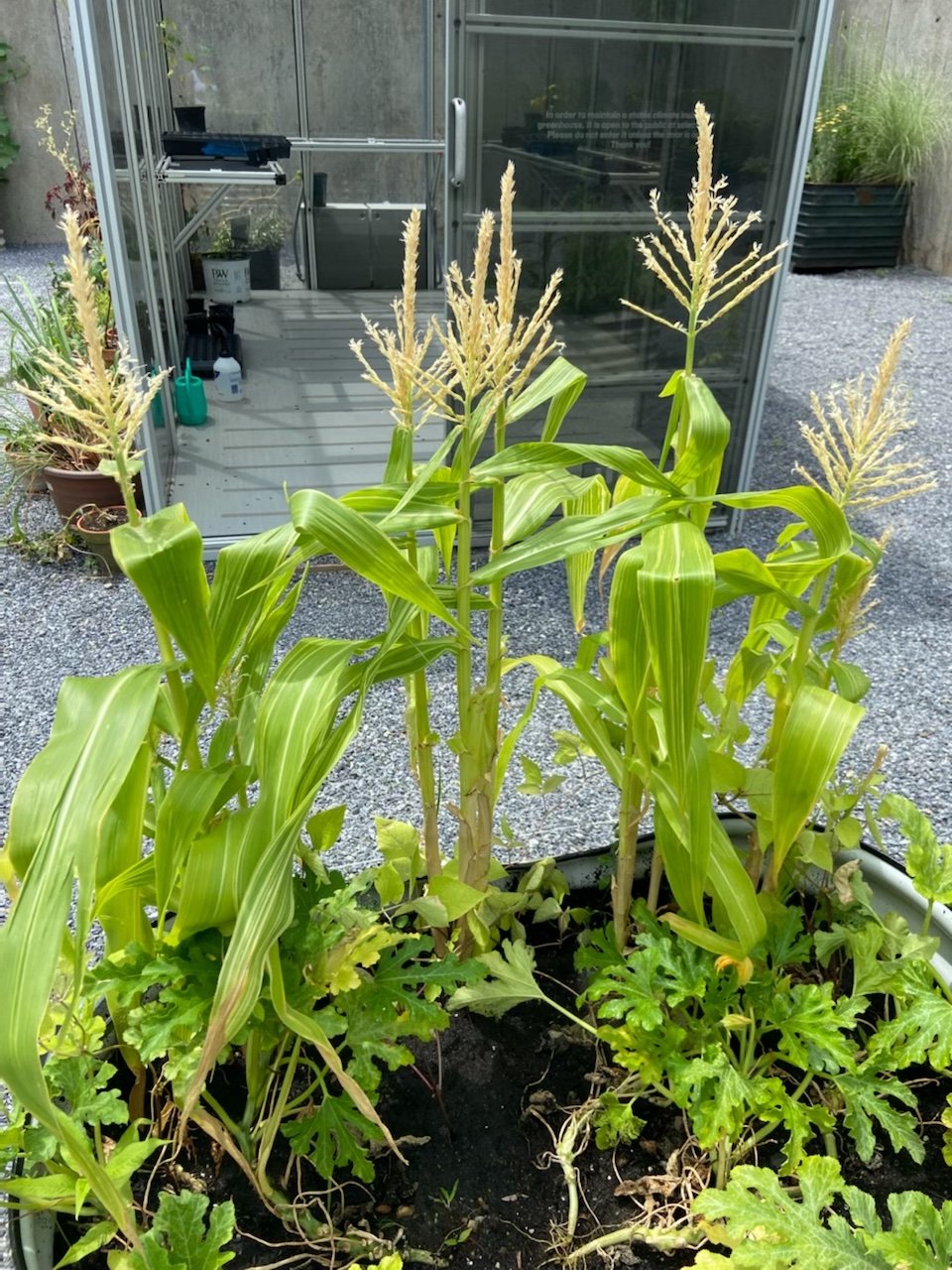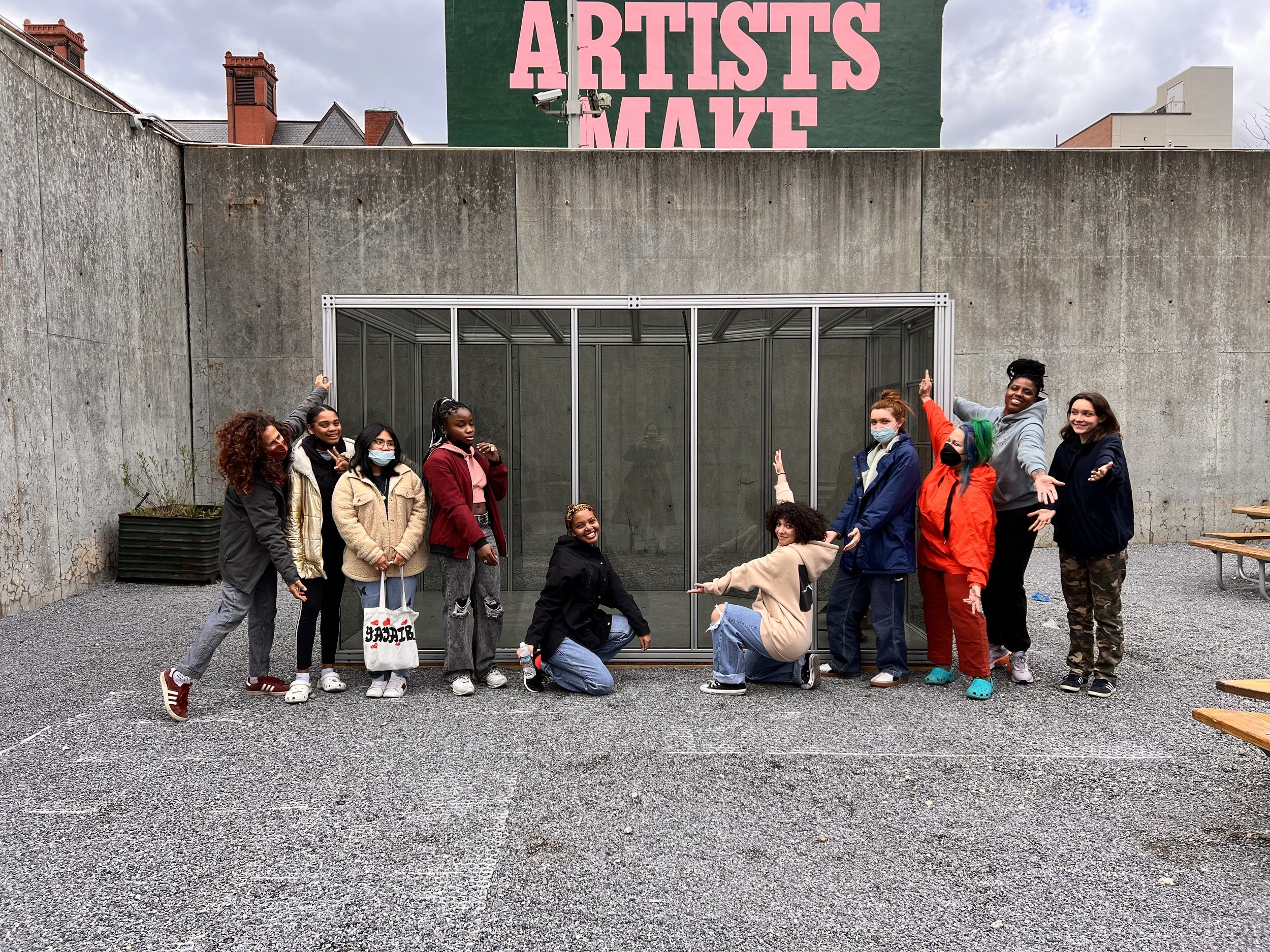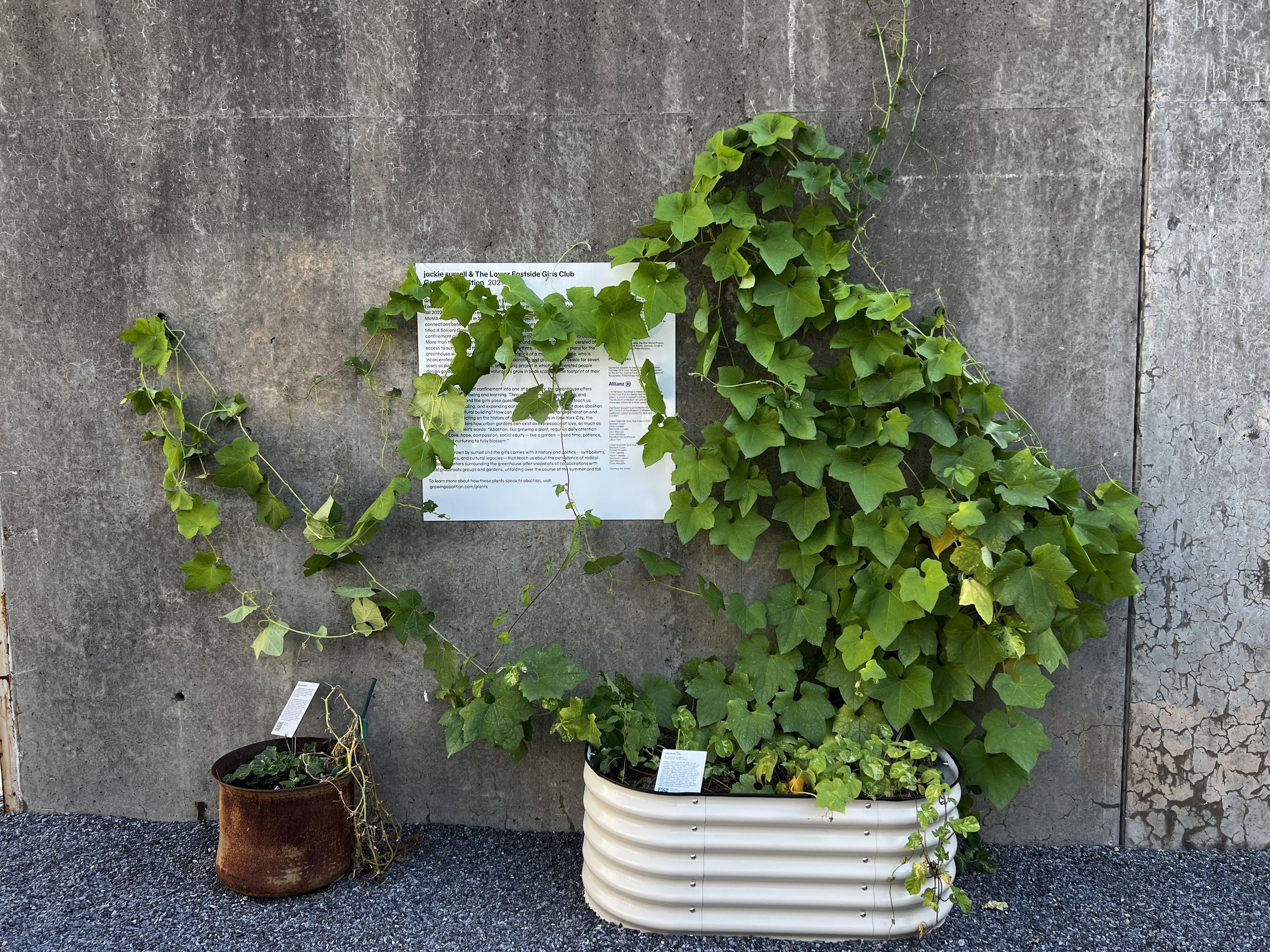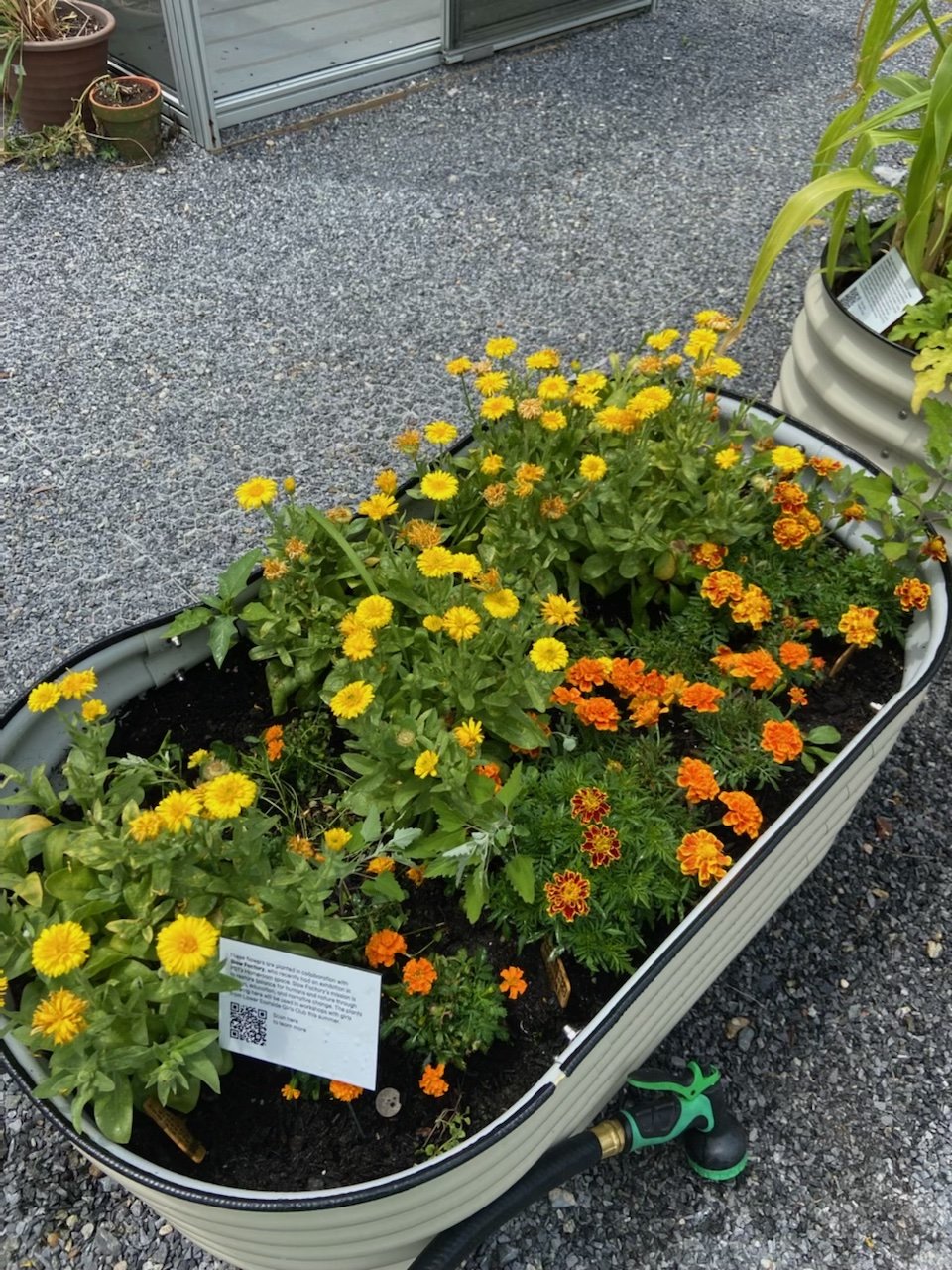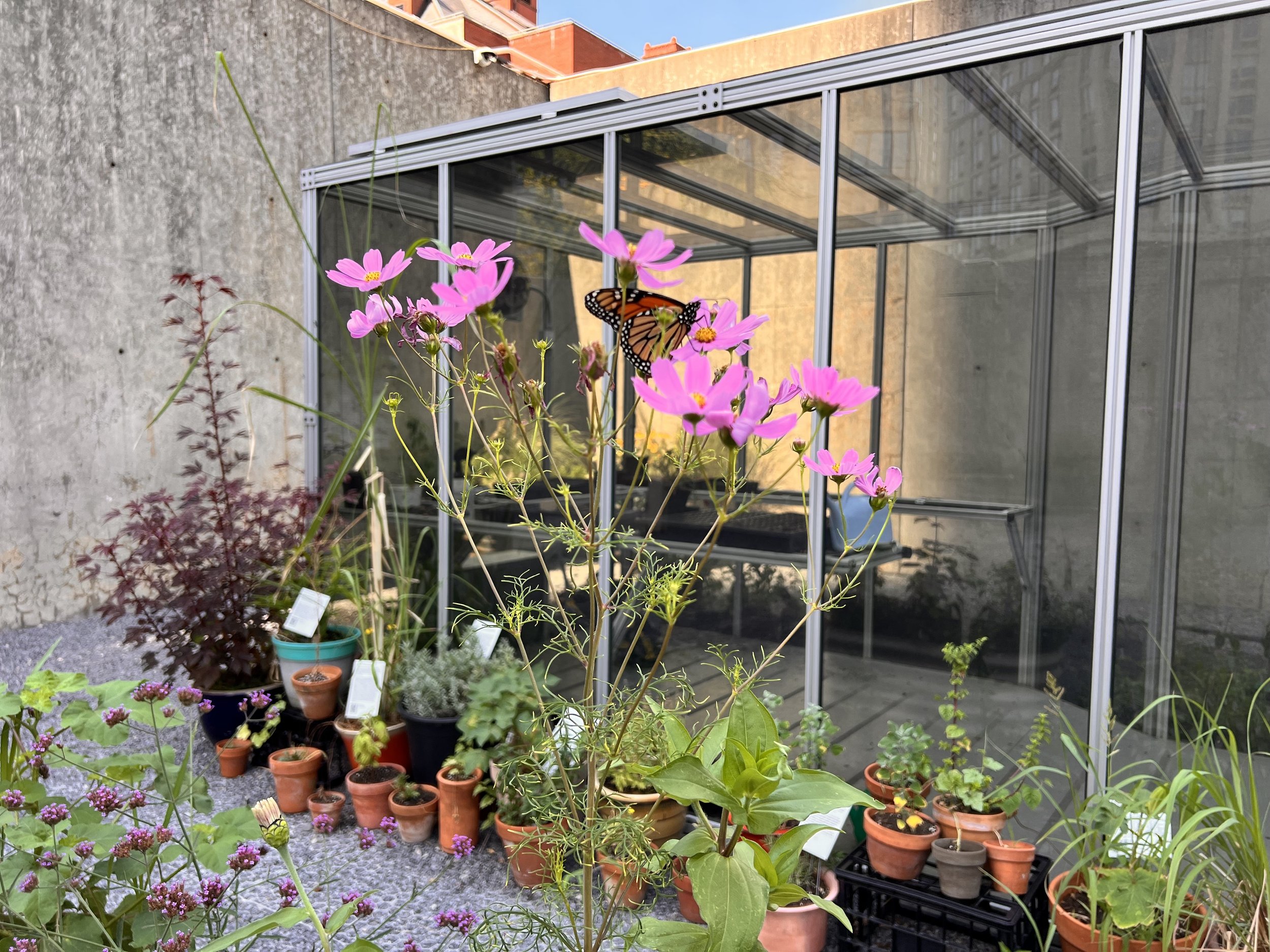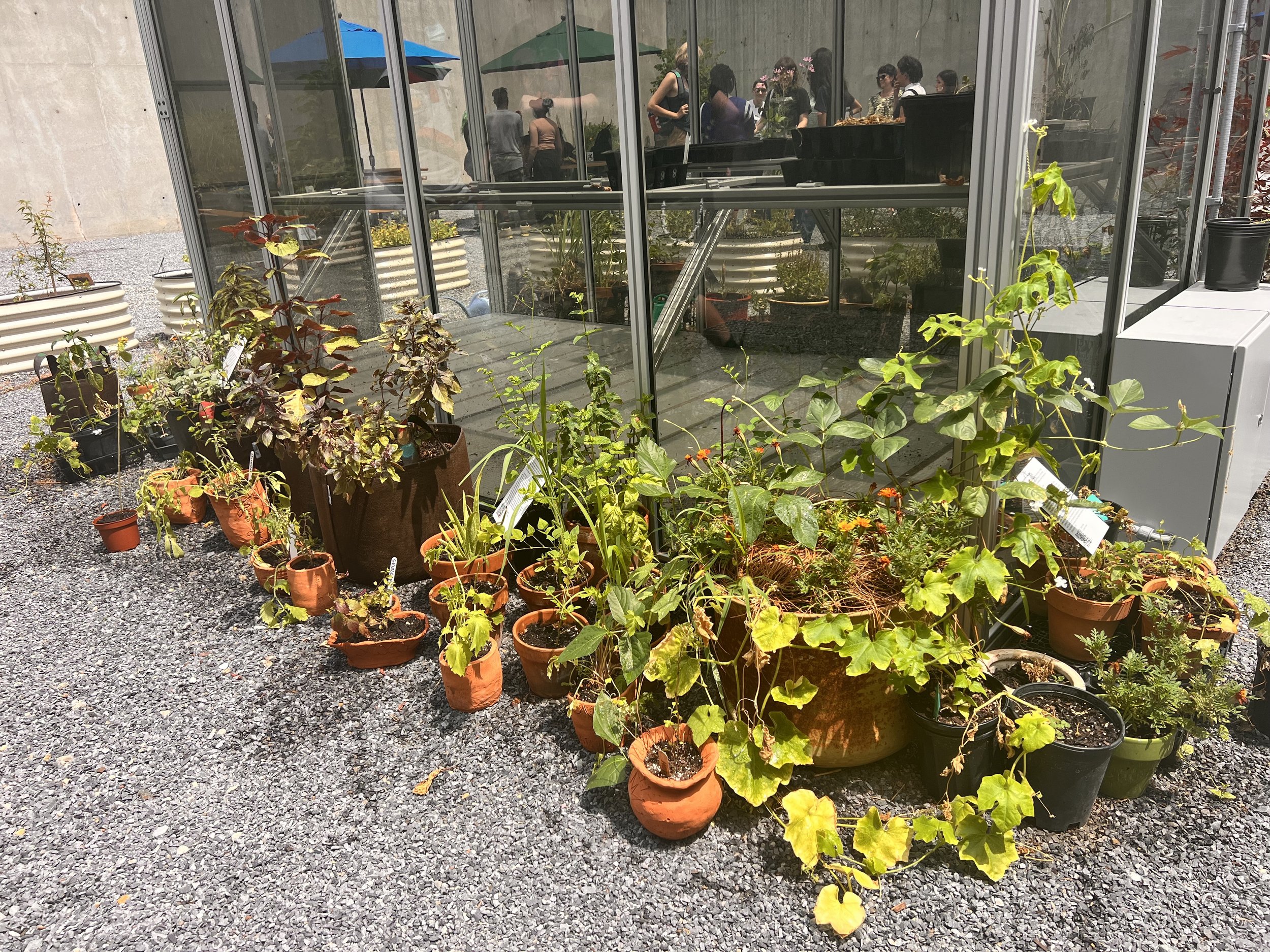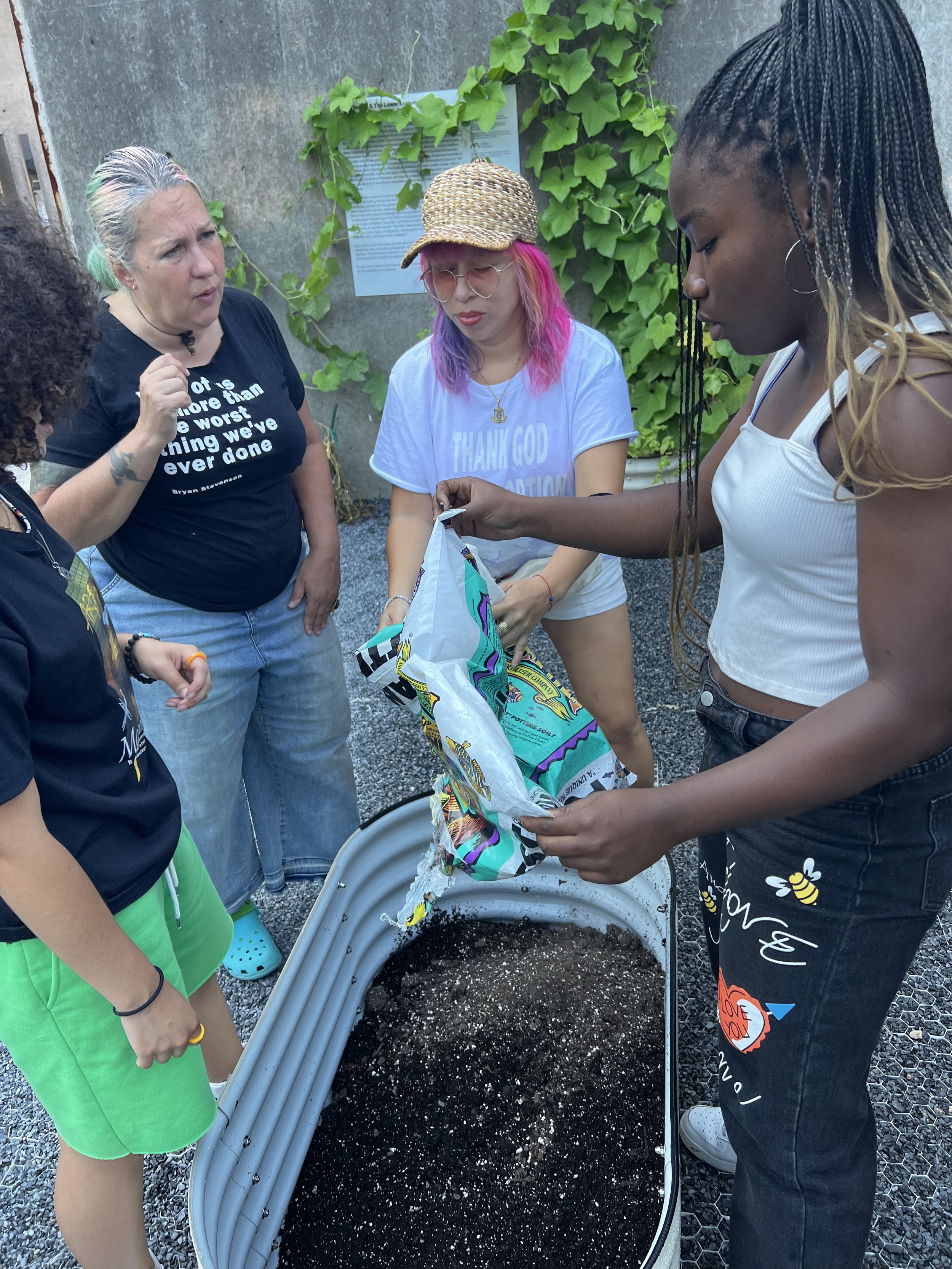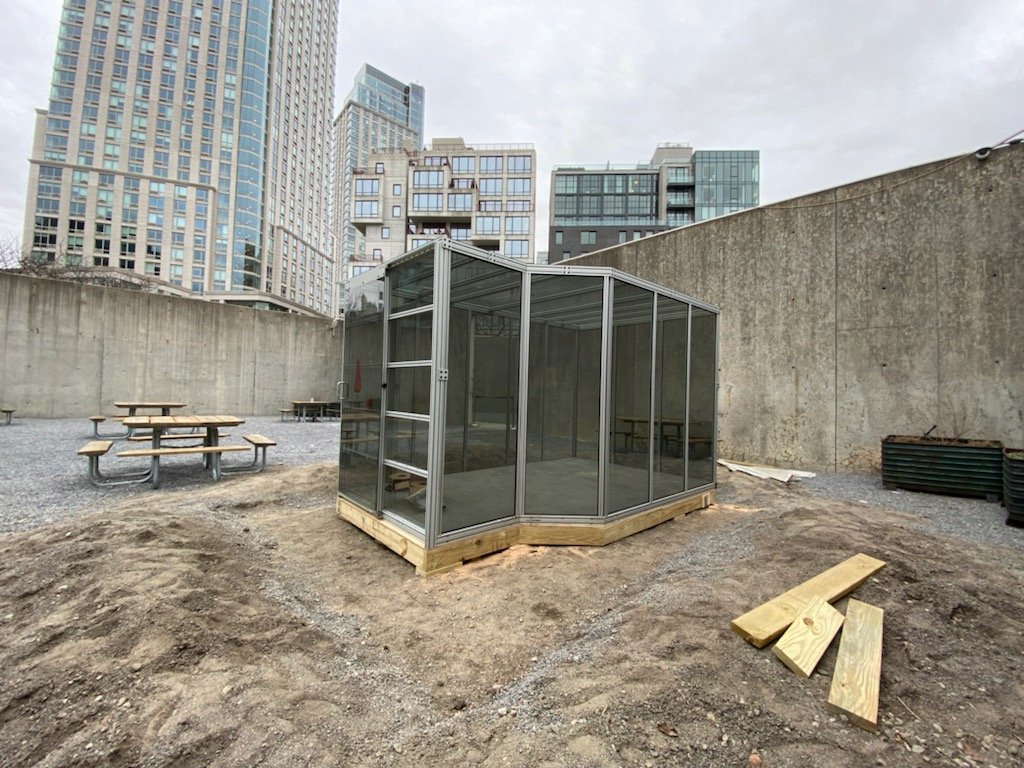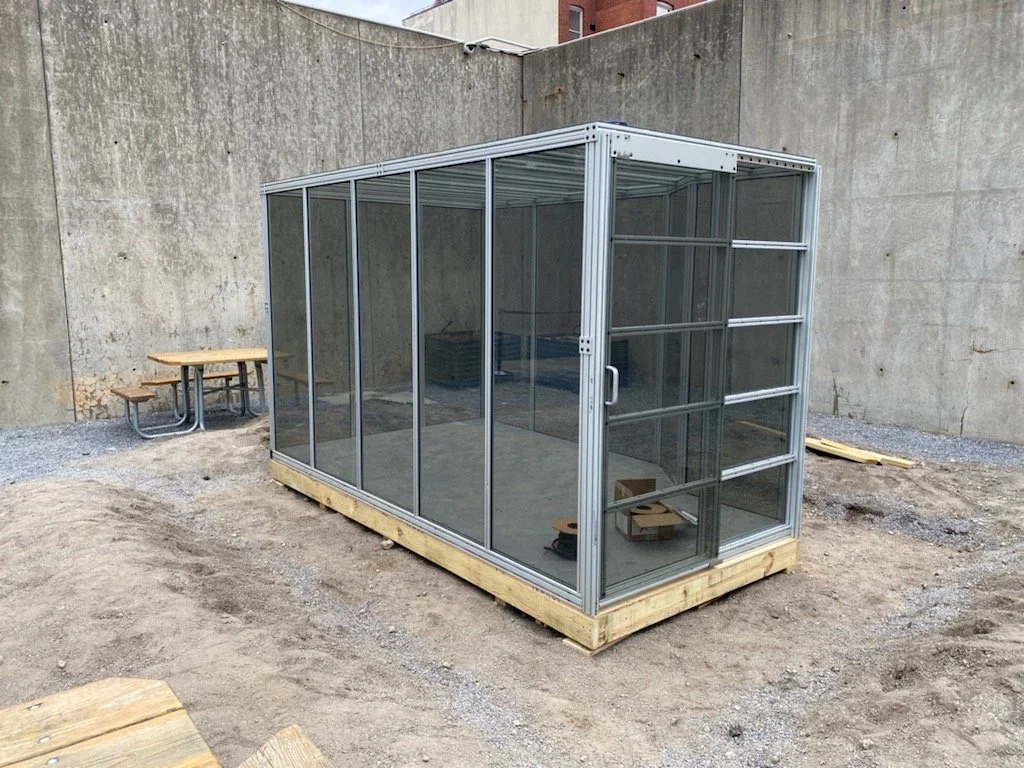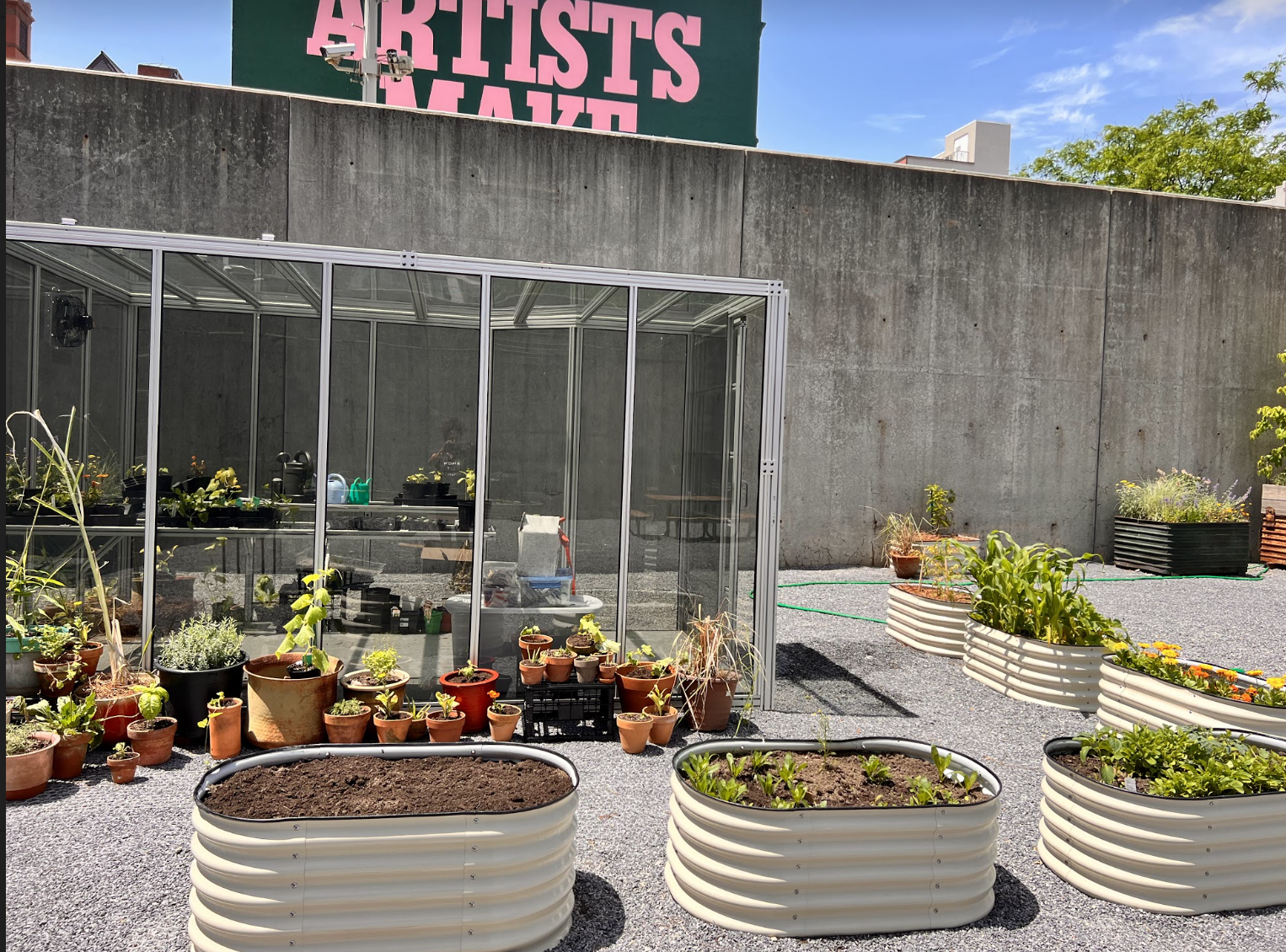Growing Abolition at MoMA PS1
Growing Abolition, a multipart project by artist jackie sumell and girls from The Lower Eastside Girls Club (LESGC), will unfold gradually in MoMA PS1’s courtyard from spring to fall 2022. The installation emerges from a collaboration between sumell, LESGC, and MoMA PS1 that started in 2021. The multipart project, through which the girls explore connections between ecology and abolitionist thought, centers on this greenhouse, titled A Solitary Greenhouse.
The greenhouse is scaled to the footprint of a solitary confinement cell in ADX Florence, a federal Supermax prison located in Colorado. More than half of the prison is located underground, depriving those incarcerated of access to sunlight and the earth’s circadian rhythms. The architectural plans for the greenhouse were informed by the lived experience of a man named Jessie, who is incarcerated at ADX. sumell has been collaborating and growing with Jessie for seven years as part of Solitary Gardens, an ongoing project in which incarcerated people design gardens that sumell and volunteers grow in beds scaled to the footprint of their prison cells.
Transforming a space of confinement into one of possibility, the greenhouse offers occasion for both growing and learning. Through plantings, conversations, and workshops, sumell and the girls pose questions such as: What can plants teach us about abolition, healing, and expanding our horizons of possibility? What does abolition have to do with natural building? How can gardens make space for regeneration and imagination? Reflecting on the history of community gardens in New York City, the project also considers how urban gardens can exist as expressions of love, as much as resistance.
In sumell’s words: “Abolition, like growing a plant, requires daily attention and care. Love, hope, compassion, social equity—like a garden—need time, patience, practice and nurturing to fully blossom.”Each plant grown by sumell and the girls carries with it history and politics—symbolisms, medicinal uses, and cultural legacies—that teach us about the persistence of radical ecology. Planters surrounding the greenhouse offer snapshots of collaborations with local grassroots groups and gardens, unfolding over the course of the summer and fall.
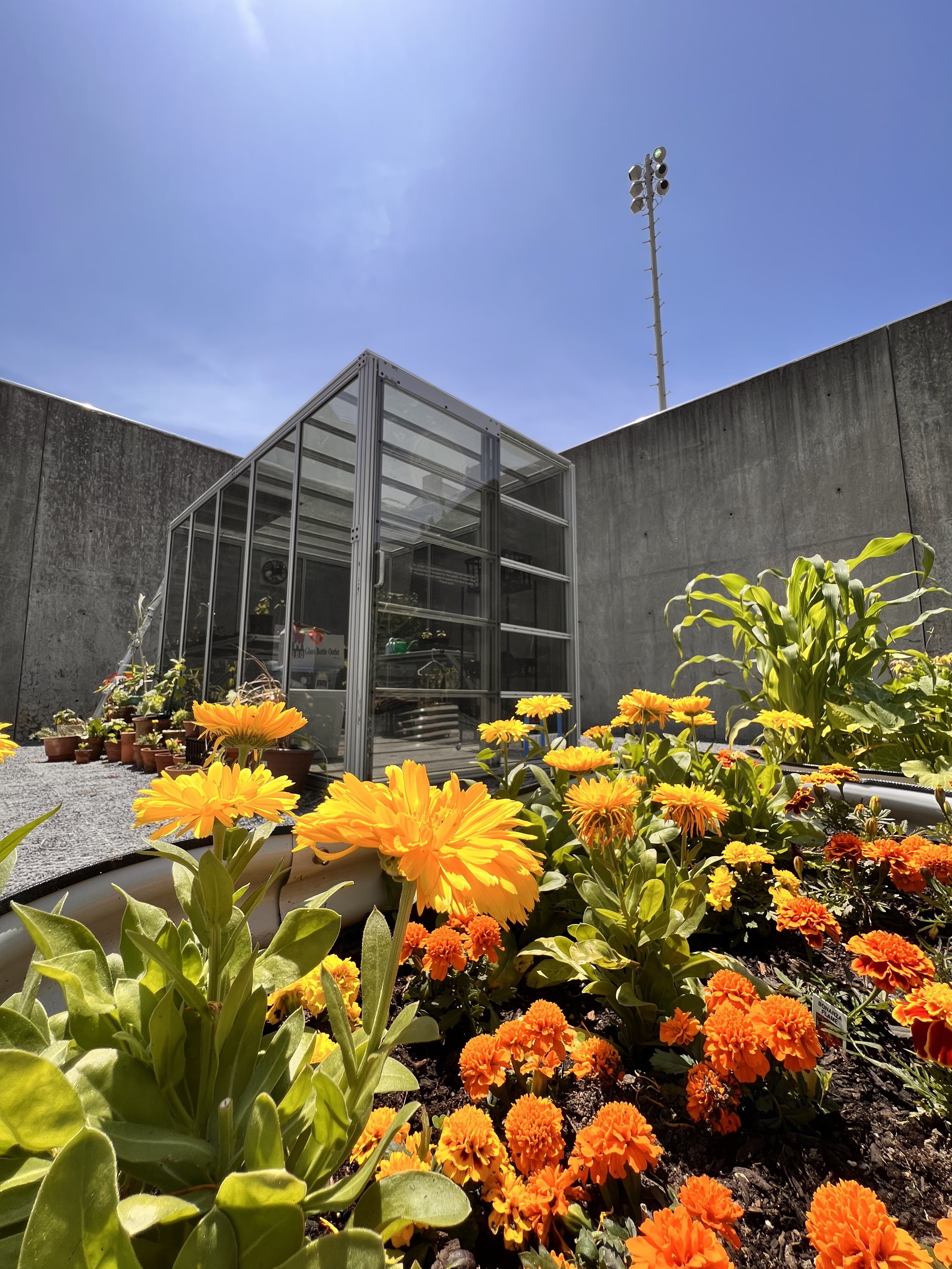
Growing Abolition in the Courtyard
-

Abolition
How does the natural world endorse abolition as a strategy for liberation? If we accept abolition as a commitment to ending cycles of harm, we can begin to see all the ways the natural world informs the tenets of human abolition. From the gardens we learn profound lessons in patience, interdependence, care and mutual aid. We learn about different relationships and boundaries.
-

Liberation
Vining plants in the courtyard at MoMA PS1 beg us to ask what is the relationship between liberation and abolition, what have we lost through capitalism? How has an industrialized time interrupted our relationship to liberation? To what, or whom have we become tethered? How can the plants teach us liberatory practices?
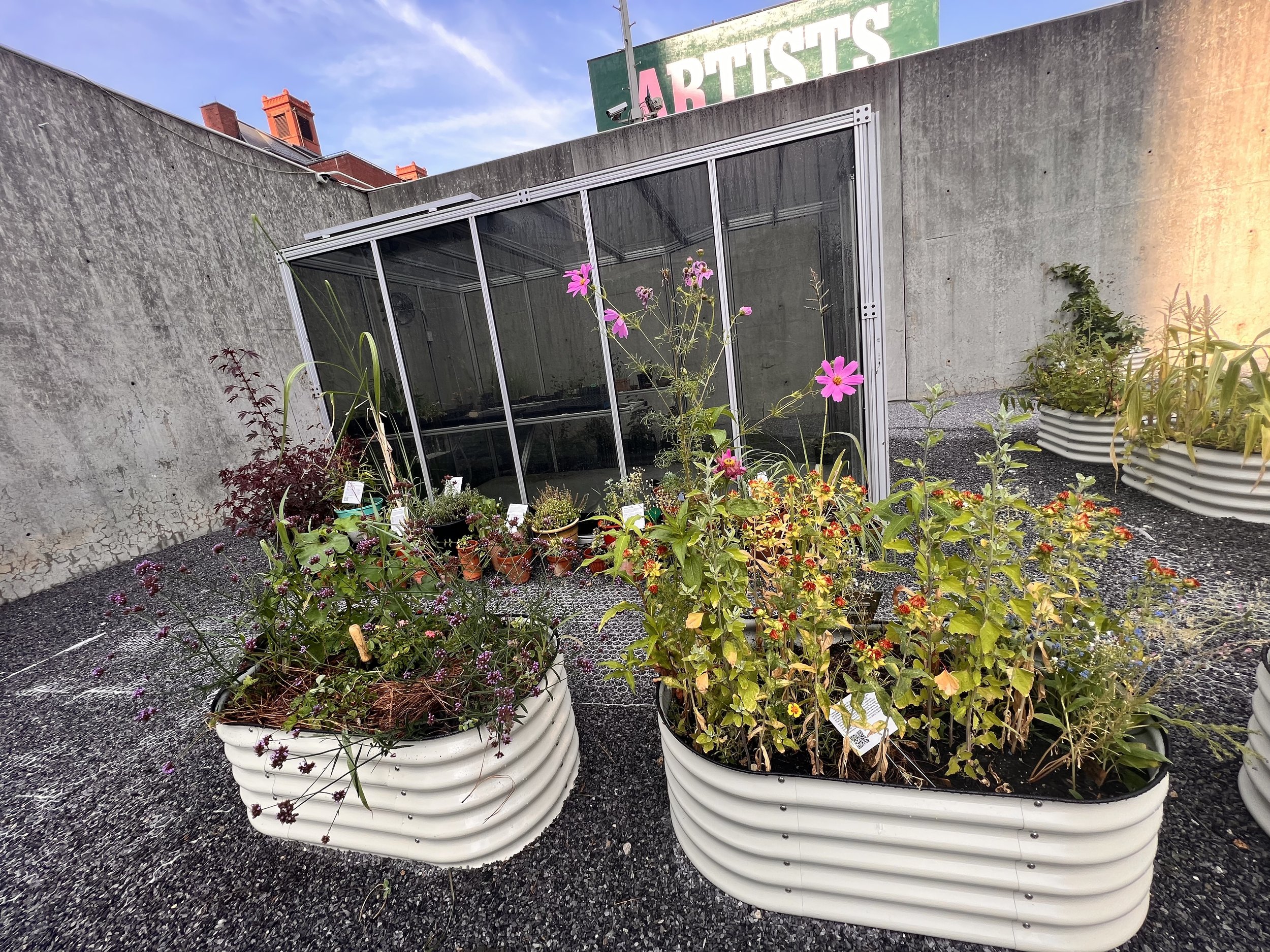
abolition is growing.
